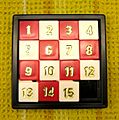Electron hole facts for kids
An electron hole (often just called a hole) is like an empty space where an electron should be in an atom. Imagine a parking lot full of cars (electrons). If one car leaves, it creates an empty parking spot. That empty spot is like an electron hole!
Electrons have a negative electric charge. When an electron leaves its spot, it leaves behind a positive charge. So, even though a hole isn't a real particle, it acts like it has a positive charge.
Holes are not actual particles like electrons or protons. Instead, they are called quasiparticles. This means they are a useful way to describe how electrons move in materials, even if they aren't physical objects themselves. Think of it like a "wave" in a stadium crowd – the wave isn't a person, but it moves as people stand up and sit down.
Electron holes are different from positrons. A positron is a real particle, the "anti-electron," which has the same mass as an electron but a positive charge. Holes are just the absence of an electron.
When electrons move from one energy level to another, they leave behind these "empty spots" or holes. This movement of electrons and holes is very important for how materials like semiconductors work, which are used in all our electronic devices like phones and computers.
How Holes Move
Imagine the 15-puzzle game, where you slide tiles around to make a picture. The empty space in the puzzle (the "hole") can move around as you slide the other tiles into it. In the same way, an electron hole can "move" through a material.
When an electron from a nearby spot jumps into the empty hole, it fills that hole. But by doing so, it creates a new empty spot (a new hole) where it just came from. So, it looks like the hole itself has moved! This movement of holes is just as important as the movement of electrons in many electronic devices.
Holes in Semiconductors
In materials called semiconductors, electrons usually sit in a "valence band" where they are tightly held. To conduct electricity, electrons need to jump to a higher "conduction band." When an electron jumps from the valence band to the conduction band, it leaves a hole behind in the valence band.
Both the electrons in the conduction band and the holes in the valence band can move. They both help carry electric current through the material. This is why semiconductors are so useful in making computer chips and other electronics.
Images for kids
-
A children's puzzle which illustrates the mobility of holes in an atomic lattice. The tiles are analogous to electrons, while the missing tile (lower right corner) is analogous to a hole. Just as the position of the missing tile can be moved to different locations by moving the tiles, a hole in a crystal lattice can move to different positions in the lattice by the motion of the surrounding electrons.
See also
 In Spanish: Hueco de electrón para niños
In Spanish: Hueco de electrón para niños


